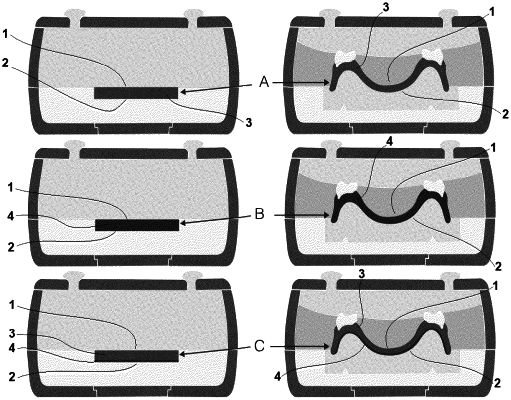| CPC A61K 6/70 (2020.01) [A61C 8/0013 (2013.01); A61C 8/0095 (2013.01); A61K 6/17 (2020.01); A61K 6/891 (2020.01); C08K 3/015 (2018.01); C08K 3/08 (2013.01); C08K 3/22 (2013.01); C08L 33/10 (2013.01); B82Y 5/00 (2013.01); C08K 2003/0806 (2013.01); C08K 2003/2244 (2013.01); C08K 2201/011 (2013.01)] | 8 Claims |

|
1. A method of treating denture stomatitis, comprising:
fitting a patient having a dental appliance with an antibacterial denture;
wherein the antibacterial denture has a polished cameo surface and an unpolished intaglio surface made of a dental restoration base material,
wherein the dental restoration base material comprises:
a first layer comprising at least 90 wt. %, relative to total first layer weight, of a cured first composition comprising, prior to curing, a first (meth)acrylic polymer and a first (meth)acrylic monomer as the cameo surface of the antibacterial denture; and
a surface layer comprising at least 90 wt. %, relative to total surface layer weight, of a cured second composition comprising, prior to curing, a second (meth)acrylic polymer, a second (meth)acrylic monomer as the intaglio surface of the antibacterial denture, and 0.45 to 0.55 wt. % of antimicrobial nanoparticles, relative to a total surface layer weight, wherein the surface layer has a thickness of 0.2 to 2 mm,
wherein no gradient in antimicrobial nanoparticle content and no continuous bulk containing the antimicrobial nanoparticles is present between the first and surface layers,
wherein the first layer is free of the antimicrobial nanoparticles,
wherein the antimicrobial nanoparticles are selected from silver nanoparticles and zirconium dioxide nanoparticles, and
wherein the material has a flexural strength in a range of 78 to 87 MPa, a translucency parameter in a range of 6.5 to 13, and a surface roughness in a range of 0.13 to 0.2 μm.
|